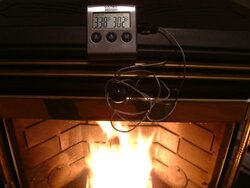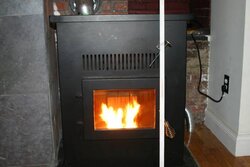Lance1 said:
Webmaster, the problem here is the stove, not the house. Read post #42. The tube output needs to be hotter than 120° and is important. Every tube output that I have read is higher than 120°. On my lowest feed rate I get about 125-130°. Your explanations on the subject that I have read, I don't agree with.
Reality does not care whether you and I agree!
The test which I gave is a reasonable, but rough, way of seeing what the output of the stove is. This idea of using:
1. Different thermometer types
2. Different Stove models
3. Different Input air temps
4. Different locations
5. Different heat exchanger types, blower outputs, etc.
as an indicator of the stove total BTU output is foolish. In fact, IMHO, using any temp output from hot air will not tell you much....or at least nothing close enough to be of value.
The heat from the pellets can only go a few places. It is either coming into the house, going up the flue, or not being burned (high smoke and creosote output would be the result of that). We can guess that if the vent system is not getting plugged or a lot of smoke is not exiting, then the heat is either coming into the room or going up the flue.
It is important to get a baseline...using some kind of other appliance...as to what another heat source does in the same room. That, along with lbs per hour burned over time (and the results of both) will say a lot.
My guess is that a LOT of pellet stoves "in the field" are not running at anywhere near the claimed efficiencies (for many reasons). But, even taking figures with some fudge......
7500 BTU (after moisture) per lb of pellets.
66% efficient= 5000 BTU into the house per lb.
If getting a kerosene or LP heater is too much trouble, another experiment would be to use two plug-in electric heaters. These would have to be on two separate electrical circuits. The total output of those would be about 11,000 BTU or a little over 2 Lbs of pellets per hour.
I'm not saying it isn't fun to "take your temperature"....just that it does not help in this case because we still don't know the "x" factor of what amount of heat that room actually needs.



